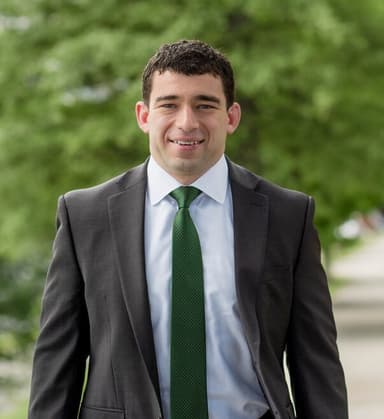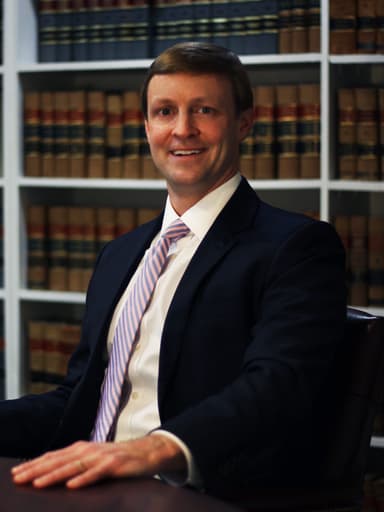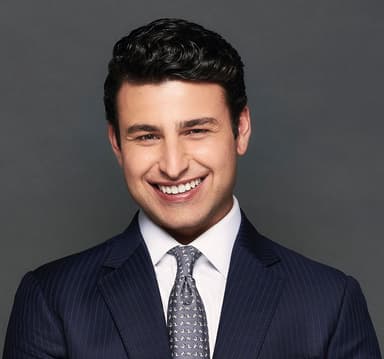


Sharif Gray · Ben Rand · Giorgio Panagos
$1.5M Verdict – Robinson v. Party City (Trip and Fall in Virginia)
![]() August 23, 2023 ||TLU n Demand
August 23, 2023 ||TLU n Demand
It was a trip and fall case at the Party City in Henrico, Virginia. Client tripped on a mat that was poorly positioned at the front of the store. We had a video that helped, but it did not show what the client tripped on because there were balloons blocking the view. The client, as a result of the fall, needed a second knee replacement; she had a previous knee replacement about 10 years prior.
There were surprisingly very little negotiations. A couple weeks before trial, the defense suggested mediation with a bracket of $200,000 to $700,000. We rejected it. And a couple days before trial, they offered $350,000 to settle the case or a $100,000 - $1,200,000 high - low. We rejected both and negotiated a $375,000 - $1,200,000 high - low.
We tried the case to a Henrico jury in front of Judge Wallerstein. The Defendant was Party City and was represented by Ben Owings and David Abel from Hanover Insurance. And they had the Party City owner at counsel table along with a technology assistant.
Voir dire was quick. Judge Wallerstein was not a fan of me trying to get the panel to talk. Numerous times, he rehabilitated the panel with the "you can all be fair" leading question. (And he did that despite us filing a bench brief discussing that very issue). We used a powerpoint presentation during voir dire that had our questions on it. It helped keep the questioning organized. I learned this tactic from Sach Oliver at TLU Vegas.
*We kept the client out of the courtroom for most of the trial to keep the focus on the defendant.
Ben handled the opening statement. Again, we used a powerpoint presentation. We framed the opening with the question "why are we here?" and offered four reasons: safety, accountability, failure to accept responsibility, and trust.
We spent most of our opening on failure to accept responsibility: defendant claiming our client was negligent, defendant alleging the injury had nothing to do with the fall, and defendant hiring a medical billing expert (who had no first-hand knowledge) to challenge the reasonableness of the medical bills. We intentionally got in front of the defense's arguments to use them against them.
We called six witnesses that Ben and I split. And we went fast. Two independent witnesses from the store, Dr. Kump (by video), two before/after witnesses, and the client. We made a point to not focus too much on the damages and, instead, focused on the defendant's negligence and our client's resilience.
The defense called 5 live witnesses that I cross-examined, to include the owner of the Party City and a handful of employees. We focused largely on the importance of safety at the store. We also asked the owner whether they were responsible for our client's injuries, and he said that they were not.
The defense called a medical billing expert by video to challenge the reasonableness of the medical bills ($422,000) that Ben handled. Ben used the negative space technique, which I learned about at TLU Huntington Beach. When the defense attempted to qualify the witness, Ben asked her 30-40 leading questions showing that she had no first-hand knowledge (e.g., "never spoke with VCU billing, right? Never been to VCU? Never spoke with the doctors? Never spoke with the nurses? etc"). The witness had little credibility by the end of Ben's questioning.
In rebuttal, we recalled Dr. Kump (by video) who explained succinctly that the medical bills in this case were consistent with the medical bills for similar medical procedures.
I handled closing argument. And, again, we focused mainly on the defendant's failure to accept responsibility. We also used the Keith Mitnik junkyard analogy and the Rex Parris lottery ticket analogy. We did not ask the jury for a number. Instead, we asked them to come back with a verdict that recognized the fair value of what was taken from our client's health and quality of life. And we suggested that their verdict should not exceed $3,000,000.
The defense closing was consistent with what we expected. They argued contributory negligence, that the injury was not related to the fall, and that the medical bills were not reasonable.
Ben handled rebuttal. And, consistent with our theme, we focused on the defendant's failure to accept responsibility.
The jury came back with a $1,500,000 verdict (with no prejudgment interest) after deliberating for about 35 minutes.
We started the trial at 10 am and finished around 5 pm.
Our client was happy and so were we.
If you can't attend Live, Watch On Demand